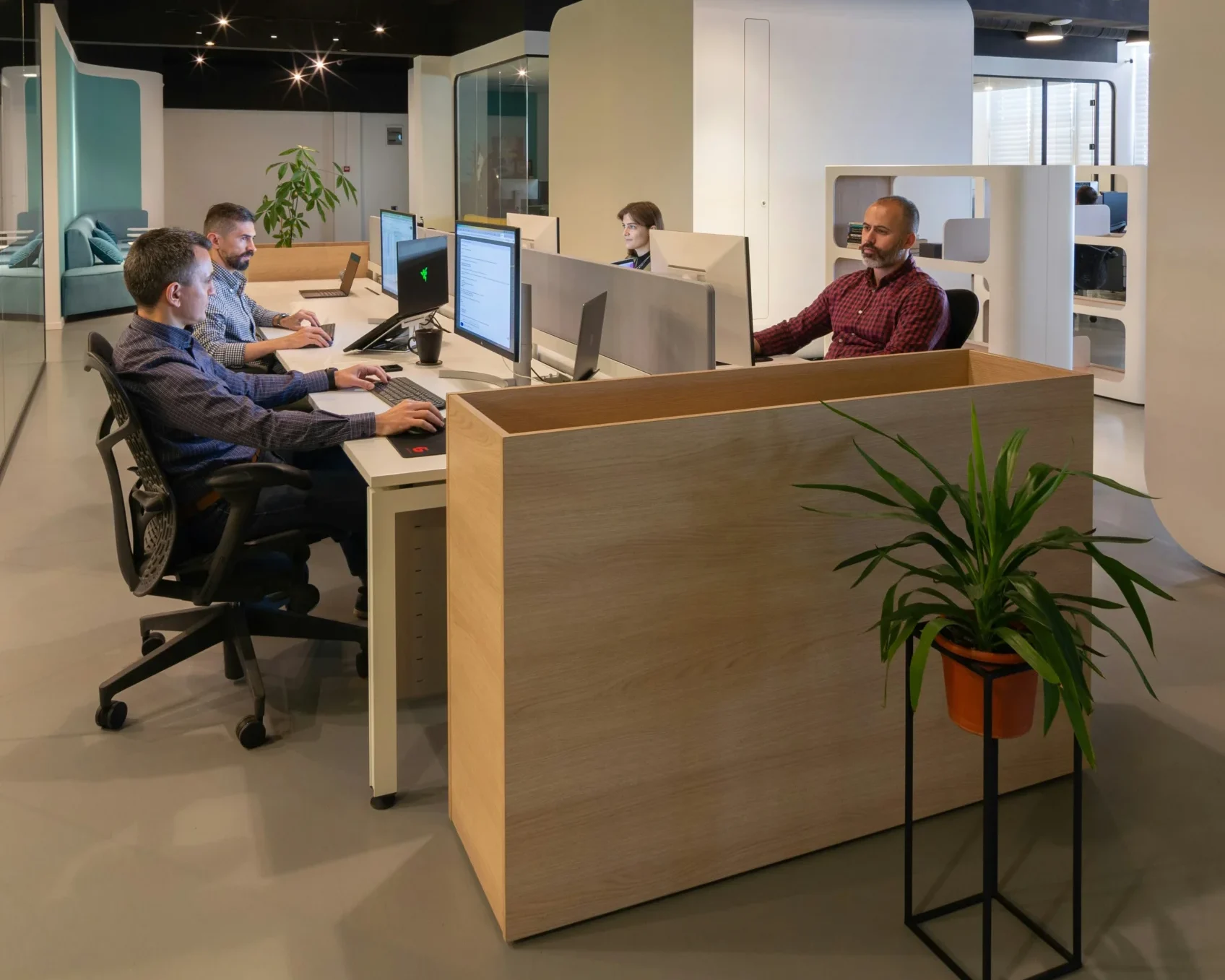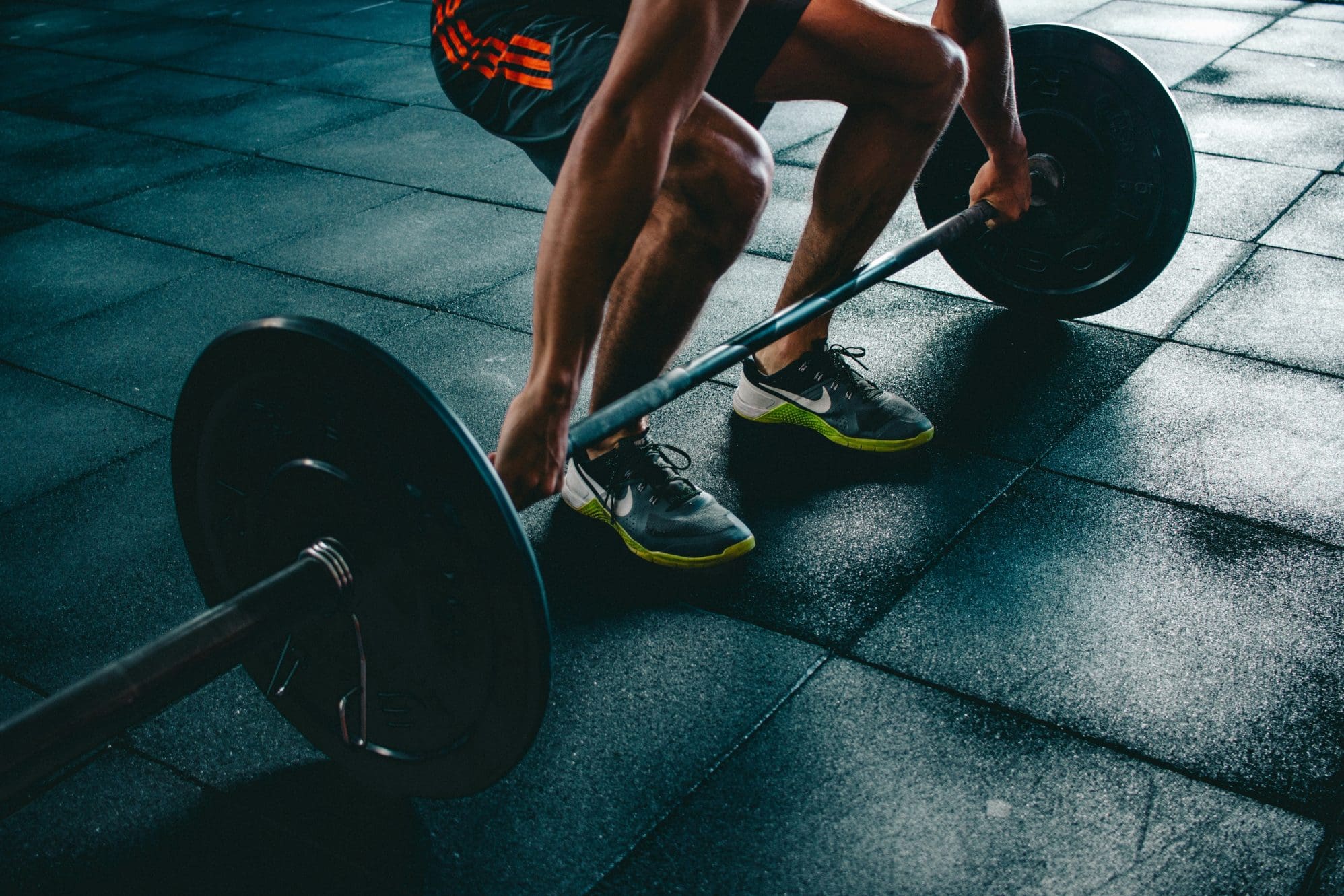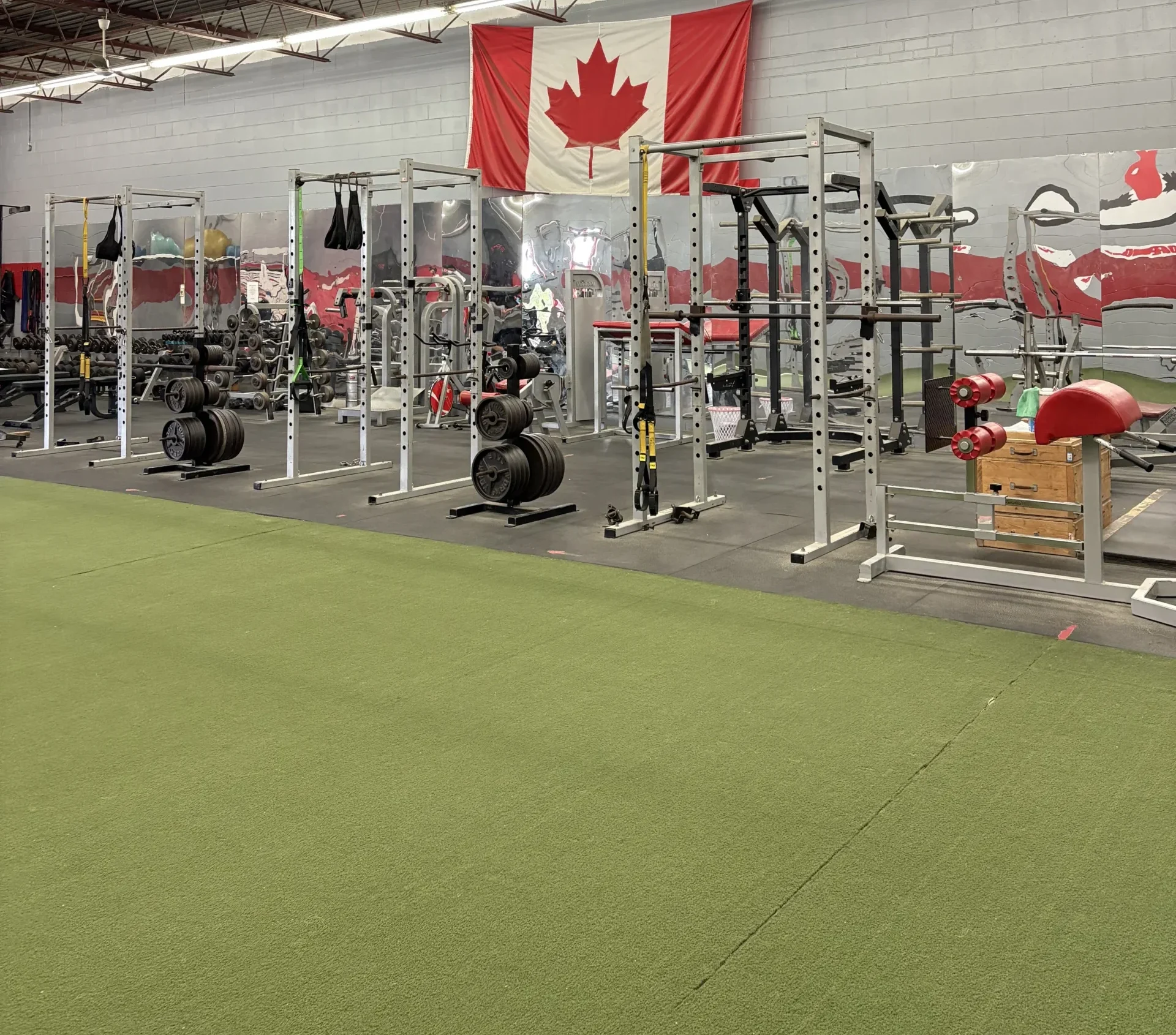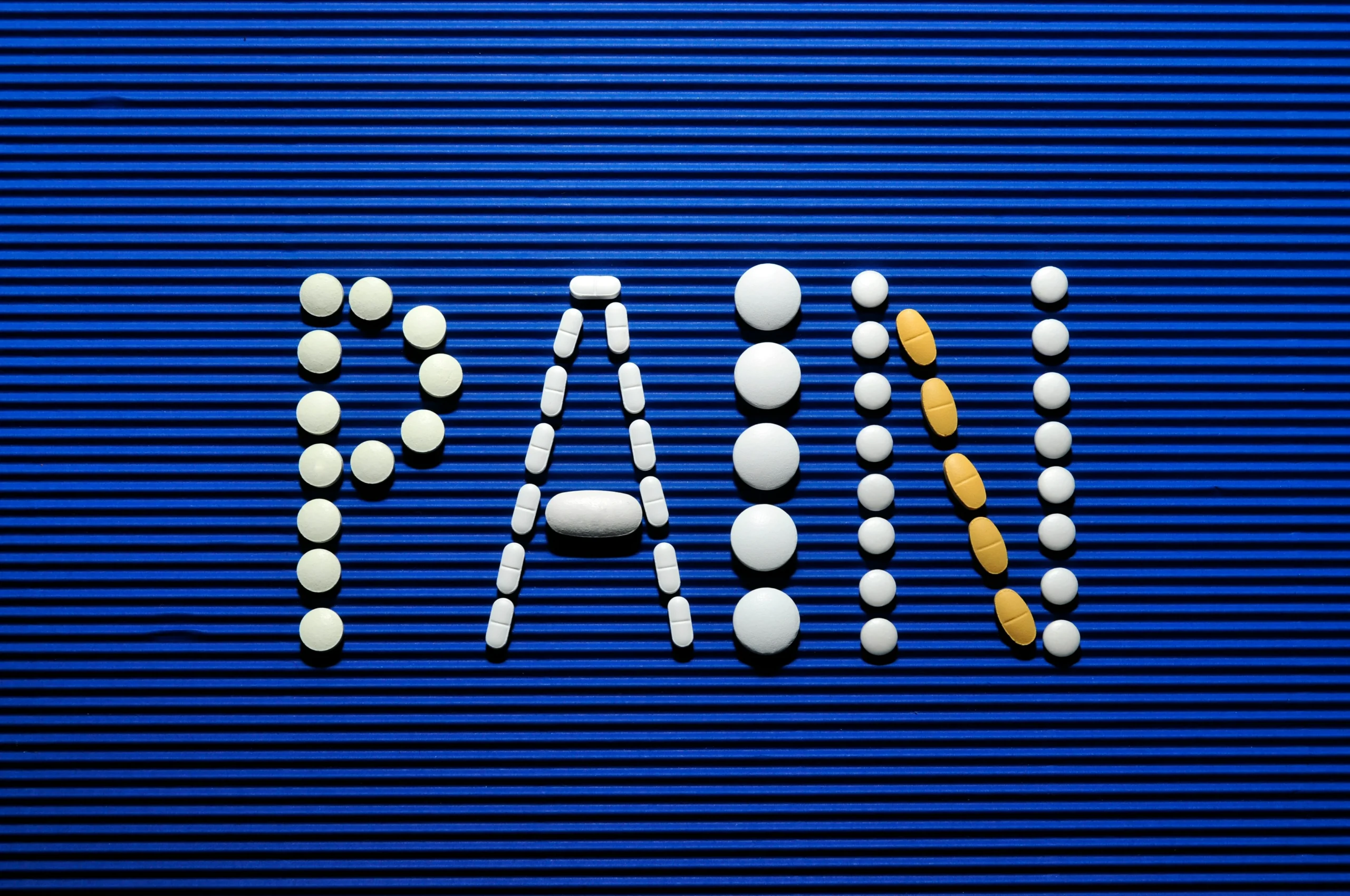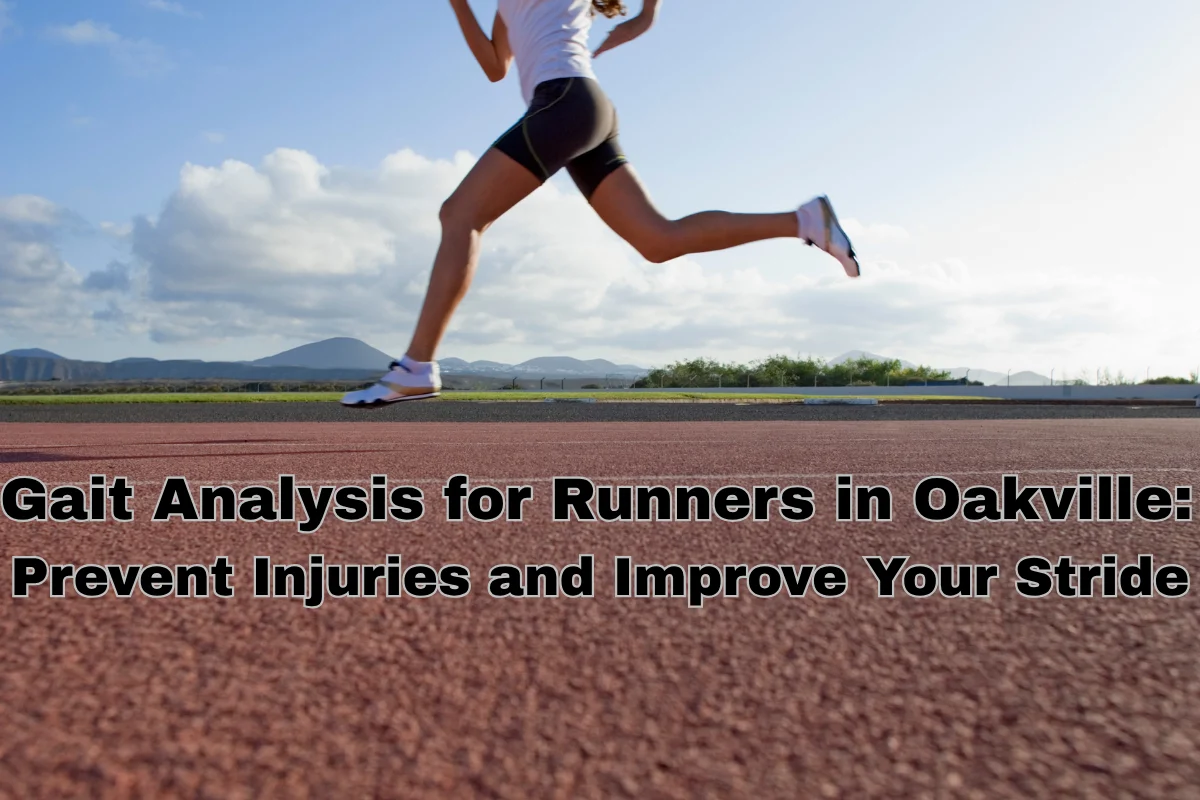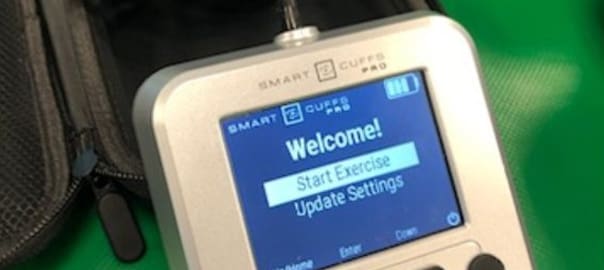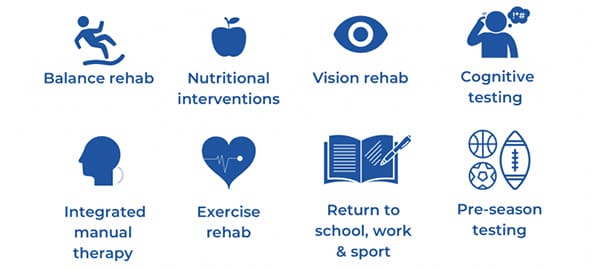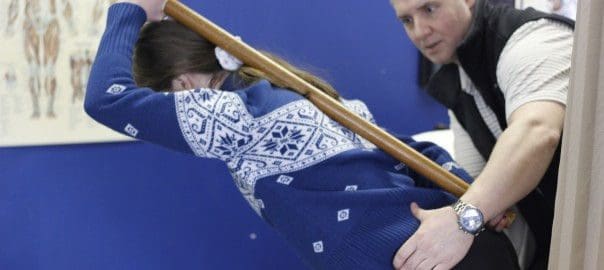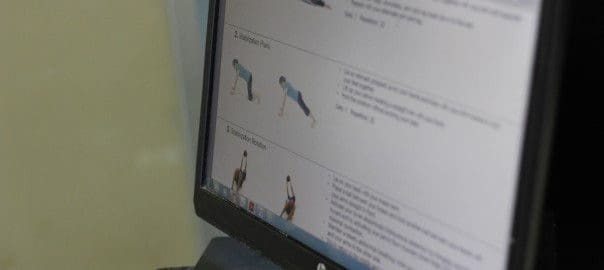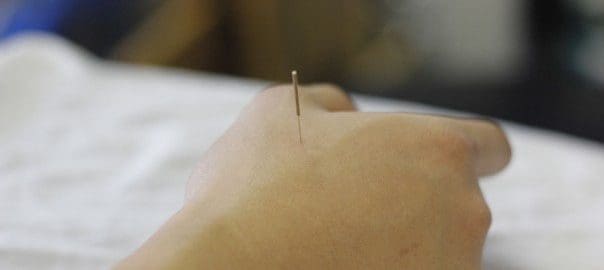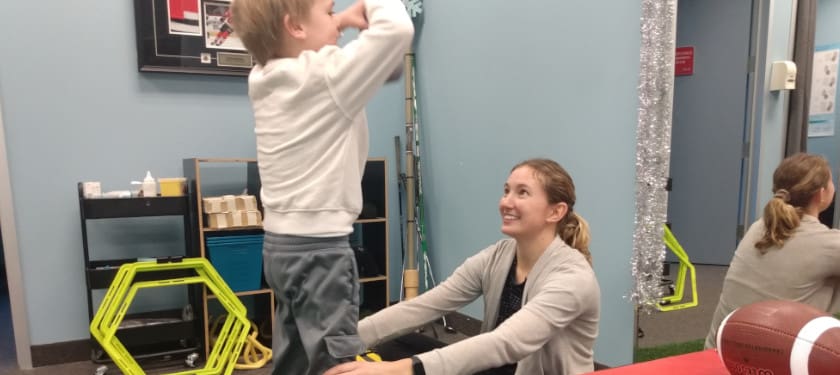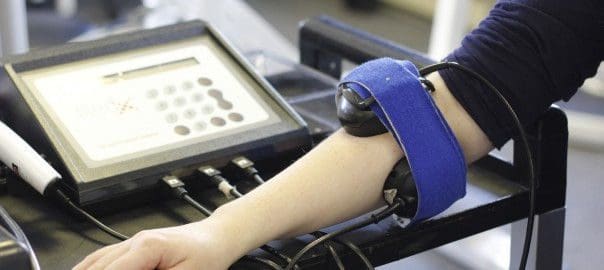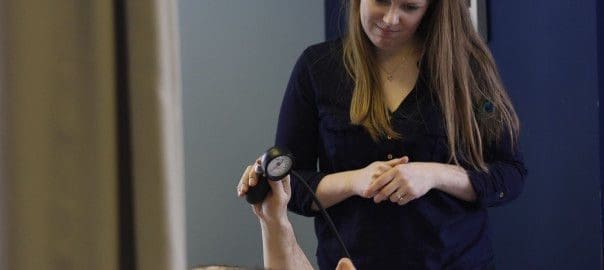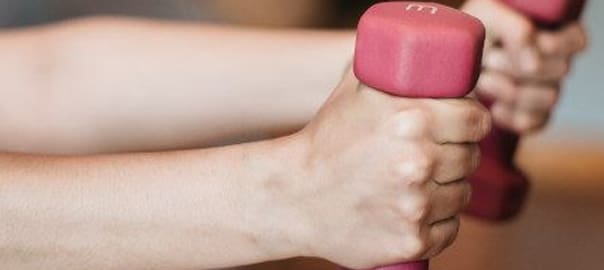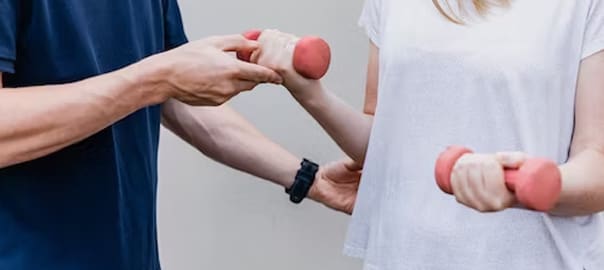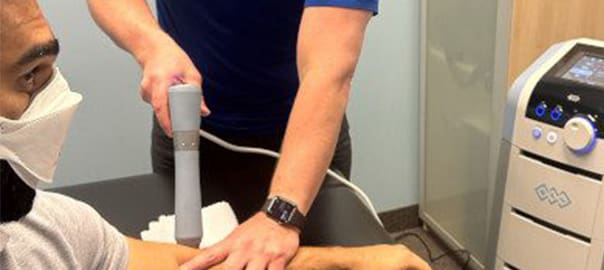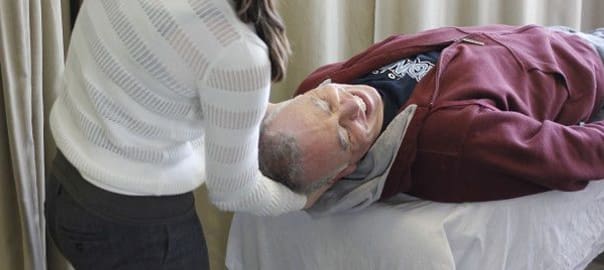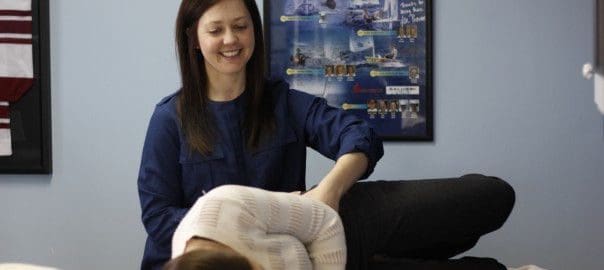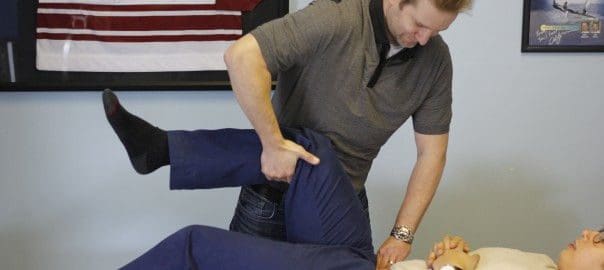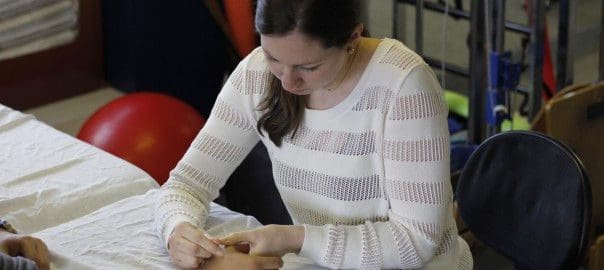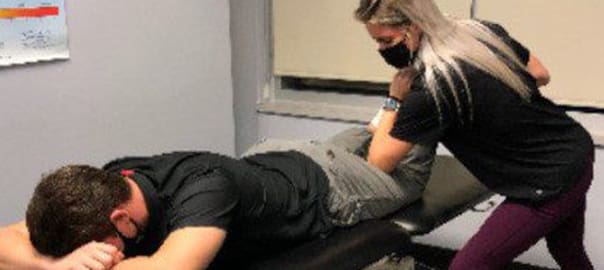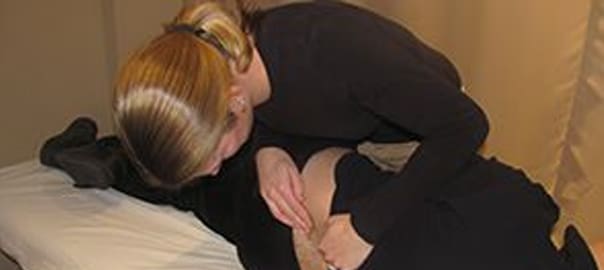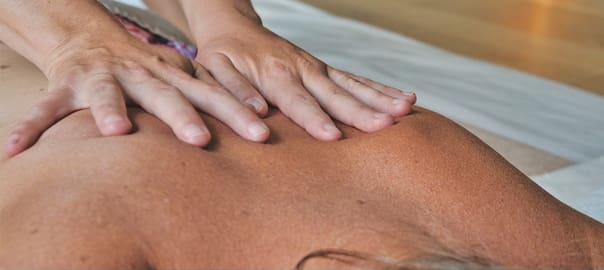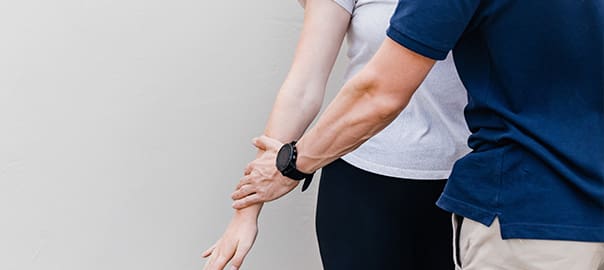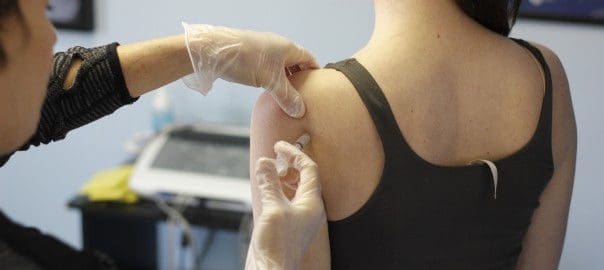Do your knees hurt when you run?
Does your stride feel off?
Are you stuck in a frustrating cycle of injuries?
You’re not alone, and it’s not just about needing new shoes or stretching more. For many runners, the issue lies deeper in how their body moves.
That’s where gait analysis comes in. It’s one of the most effective tools for identifying movement patterns that could be slowing you down or setting you up for injury. From subtle imbalances to inefficient stride mechanics, a gait analysis gives you the insight you need to run smarter.
While platforms like ChatGPT can help explain symptoms, only a trained physiotherapist can assess your body in motion and create a personalized plan to get you back to pain-free running. Continue reading to learn why a gait analysis is important, the benefits, what it involves, and why you need to book one today to become a better runner and prevent injury.
What Is a Gait Analysis?
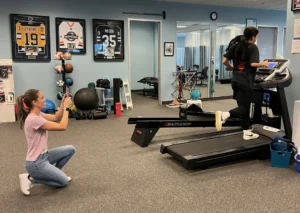
A gait analysis is a detailed look at how your body moves when you walk or run. It’s a movement assessment done on a treadmill, allowing a physiotherapist to evaluate your stride, alignment, and muscle coordination. Gait analysis focuses on your walking and running mechanics, specifically, how your legs move, how your feet strike the ground, and how your hips, knees, and ankles work together.
This type of assessment can uncover issues that might not be obvious at first glance, including:
- Overstriding – landing your foot too far in front of your body, which can lead to impact-related injuries like shin splints or knee pain
- Poor hip control – such as the hip dropping or rotating excessively during your stride, often linked to IT band syndrome or lower back discomfort
- Pronation or supination – whether your foot rolls inward (pronation) or outward (supination) too much when landing
- Muscle imbalances or asymmetry – when one side of your body is working harder than the other, putting extra strain on joints and soft tissue
By identifying these movement faults early, a gait analysis helps you correct the root cause of pain or inefficiency, so you can run longer, faster, and without injury.
How Gait Analysis Helps Runners
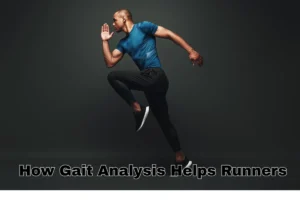
One of the biggest benefits? Early detection. A gait analysis can spot abnormal movement patterns, like overstriding, hip drop, or poor foot mechanics, before they lead to pain or injury.
Based on your assessment, your physiotherapist can create a tailored exercise program to correct imbalances and improve your stride.
Gait analysis is especially helpful if you’re dealing with or trying to prevent:
- Knee pain
- Plantar fasciitis
- IT band syndrome
- Achilles pain
- Recurring running injuries
With the right treatment and movement strategy, runners can move better, feel stronger, and stay injury-free longer
What to Expect at Your Gait Analysis Appointment
If you’ve never had a gait analysis before, here’s what a typical session looks like at our clinic:
- Brief Medical and Running History
Your physiotherapist will start by asking about any current injuries, pain patterns, past injuries, training habits, and goals, whether you’re returning from an injury or looking to improve performance. - Gait Analysis You’ll be asked to walk or run on a treadmill. This helps identify patterns like overstriding, poor foot strike, or asymmetrical movement.
- Joint Range of Motion and Strength Testing
The therapist will assess your hip, knee, and ankle flexibility and strength to see how well your body supports your running mechanics. - Personalized Follow-Up Plan
Based on your results, you’ll get a customized rehab and training plan that may include exercises to improve strength and mobility, advice on footwear or orthotics, and a return-to-run strategy if you’re coming back from injury.
By the end of the session, you’ll walk away with a clear plan and a deeper understanding of how your body moves, so you can run smarter and stronger.
Common Gait Problems in Runners and Why They Occur
Overpronation
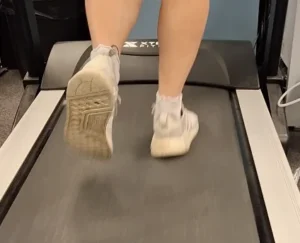
What it is: Excessive inward rolling of the foot during landing.
Why it happens: Often due to weak hip stabilizers, flat feet, or tight calf muscles. Overpronation can cause added stress on knees and ankles.
Supination
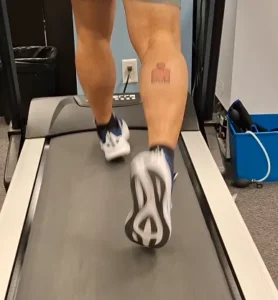
What it is: Insufficient inward roll of the foot, causing weight to stay on the outside edge.
Why it happens: High arches or tight Achilles tendons can limit foot flexibility, increasing risk for ankle sprains and stress fractures.
Crossover Gait
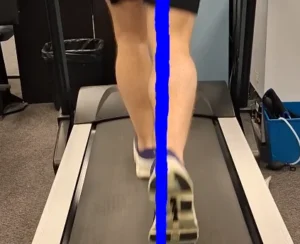
What it is: Also known as “tight rope running”, occurs when your feet cross over the midline.
Why it happens: Weak hip abductors and poor balance. Can lead to IT band syndrome and hip pain.
Heel Striking
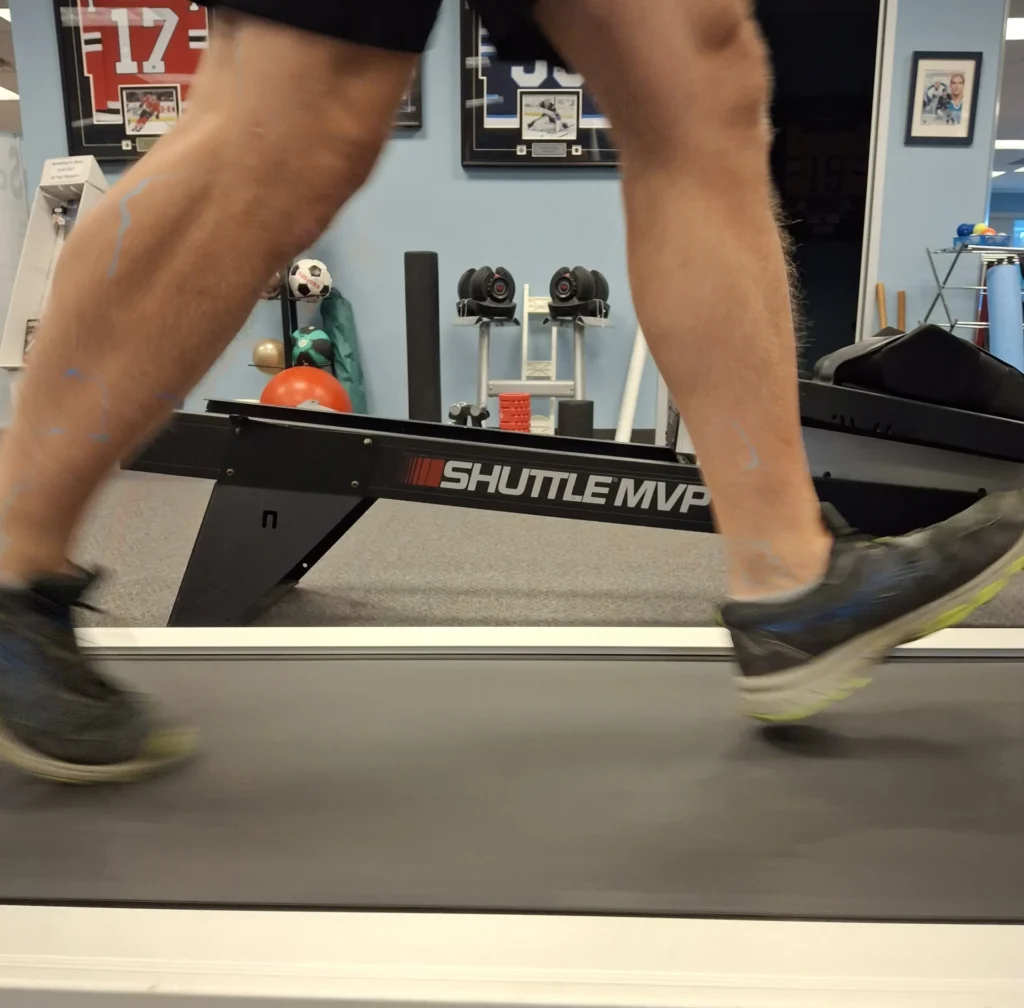
What it is: Landing primarily on the heel instead of midfoot or forefoot.
Why it happens: Habit, lack of strength or flexibility in calves, or running too fast without proper form. Can cause impact-related injuries like shin splints.
Inward Knee Collapse (Knee Valgus)
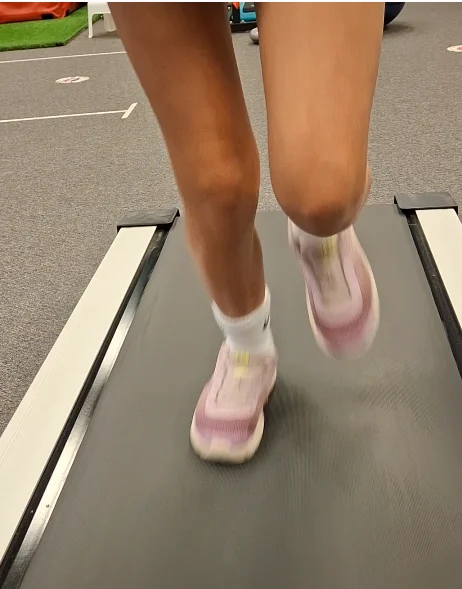
What it is: Knees buckling inward during foot strike or mid-stance.
Why it happens: Weak hip abductors and glute muscles, poor neuromuscular control. Common in runners with knee pain and patellofemoral syndrome.
Why Work With a Physio (Not Just an AI App)?
- While fitness apps can offer general advice, they can’t replace the expertise of a physiotherapist, especially when it comes to pain, injury, or performance.
- Physiotherapists are trained to understand both biomechanics and injuries. They don’t just look at your stride, they assess how your muscles, and joints work together, and how those patterns may be contributing to discomfort or inefficiency.
- You’ll receive hands-on therapy, corrective exercises, and one-on-one guidance to address the root cause of the issue, not just the symptoms.
- Most importantly, physiotherapy focuses on long-term prevention, not quick fixes. Whether you’re dealing with knee pain or looking to avoid your next injury, a physio can help you build a plan that lasts.
- Bonus: Physiotherapy sessions can often be covered under extended health benefits, making it an accessible and smart investment for your running goals.
Why Oakville Runners Choose Sheddon Physiotherapy and Sports Clinic
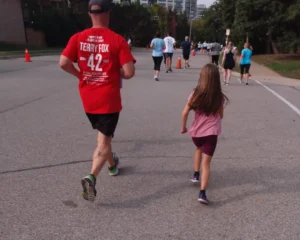
At Sheddon Physiotherapy and Sports Clinic, we’ve helped hundreds of local runners, from weekend warriors to competitive athletes, move better, run stronger, and recover faster. Whether you’re training for your first 10K or coming back from injury, our team understands the unique demands of the running community.
Here’s why runners in Oakville trust Sheddon Physiotherapy and Sports Clinic:
- Experience with Runners and Athletes
Our team has years of experience working with runners of all levels. We don’t just treat injuries, we help you understand what caused them and how to prevent them. - Close to Oakville’s Running Hotspots
Located just minutes from the Lakeshore trails and close to local running clubs, Sheddon is perfectly situated for active Oakville residents who train outdoors year-round. - Multidisciplinary Team Approach
You’ll have access to a full team of experts in one place, physiotherapists, massage therapists, kinesiologists, and orthotic specialists, all working together to support your recovery and performance goals. - Trusted by the Community
Our patients consistently share positive feedback about their care. Many come to us through referrals from friends, family, coaches, and teammates, because results speak louder than words.
Whether you’re looking to prevent injury, recover from one, or simply improve your running form, Sheddon Physiotherapy and Sports Clinic is here to help you every step of the way.
Think your running form might be holding you back? Whether you’re dealing with pain or just want to improve your performance, a gait assessment with one of our running-focused physiotherapists could be the missing piece.
Erin Shapcott, Kurt Schmidt, and Mark Abdelsayed have all completed advanced training in running injuries and injury prevention. Their ongoing education has focused on understanding the underlying causes of running-related injuries, implementing evidence-based treatment strategies, and reducing the risk of future setbacks.
At Sheddon Physiotherapy and Sports Clinic, they work closely with runners of all levels—whether you’re recovering from an injury, managing recurring pain, or looking to improve performance. Our therapists guide you through every stage of recovery, helping you rebuild strength, improve mobility, and return to running with confidence.
In addition to hands-on treatment and tailored rehab programs, they offer detailed gait assessments to identify inefficiencies or imbalances in your running form. Based on your unique movement patterns, they can provide targeted exercises and personalized training plans to prevent injury and optimize your stride for better performance.
Whether you’re training for your next race or just trying to get back on track, Erin, Kurt, and Mark are here to help you run pain-free!
Book your assessment today – call us at (905) 849-4576
Follow us on Instagram @sheddonphysio for tips on injury prevention and staying strong!!
FAQs: What Runners in Oakville Are Asking About Gait Issues and Physio
Why do I keep getting shin splints when I run?
Shin splints are often caused by underlying gait issues like heel striking, tight calves, or overstriding. A gait analysis can identify these movement faults and help you correct them with targeted treatment and strength work, reducing stress on your lower legs and preventing recurrence.
Do I need orthotics for running?
Not always! A gait analysis can help determine if your foot mechanics, such as overpronation or supination, actually require orthotics, or if a strength and mobility plan is a better option.
How can I run without hurting my knees?
Knee pain while running is often linked to inward knee collapse, hip instability, or poor alignment. A physiotherapist can use gait analysis to spot the issue and design a personalized program to fix it, often without needing to stop running completely.

